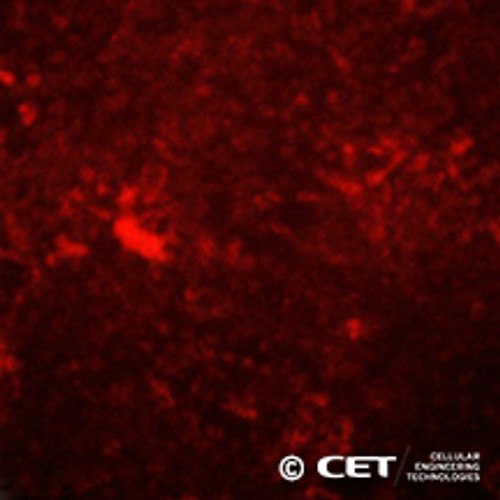Human Alzheimer’s Presenilin-1 Mutation iPSC Cell Line
Our Human Alzheimer’s Presenilin-1 Mutation iPSC Cell Line carries a mutation in the PSEN1 (Presenilin-1) gene, the most common cause of familial Alzheimer’s disease (FAD). Presenilin-1 serves as the catalytic subunit of γ-secretase, an essential intramembranous protease responsible for cleaving type 1 transmembrane proteins, including amyloid precursor protein (APP) and Notch. APP processing via β-secretase and γ-secretase generates β-amyloid (Aβ) peptides of different lengths, with Aβ40 making up the majority (~90%). However, researchers believe that the more hydrophobic Aβ42 peptide nucleates Aβ aggregation, contributing to amyloid plaque deposition in Alzheimer’s disease brains [i] .
Our team derived this iPSC line from primary fibroblast cells of a 70-year-old male patient of Caucasian descent, diagnosed with early-onset Alzheimer’s disease (EOAD). Using our patented episomal, non-integrating reprogramming method, we have generated a safe, high-fidelity iPSC line with low insertional mutagenesis risk, making it an ideal model for neurodegenerative disease research, drug discovery, and precision medicine applications. We recommend our Human iPSC Growth Media CET-MR1001-K for culturing of these cells.
To enhance clinical safety, these cells were reprogrammed without Myc or Lin28 transcription factors, which are linked to neoplastic formation. This approach reduces the oncogenic risk of downstream differentiated neural cells, ensuring higher stability and reproducibility in disease modeling.
Key Features & Benefits:
- Patient-derived iPSC model carrying a PSEN1 mutation, the most common genetic cause of familial Alzheimer’s disease (FAD).
- Non-integrating episomal reprogramming ensures stable and safe pluripotency induction.
- Excludes Myc and Lin28 to minimize oncogenic risk.
- Robust neural differentiation capacity, making it suitable for studying β-amyloid pathology, tau aggregation, and neurodegenerative processes.
- Ideal for drug discovery, high-throughput screening, and personalized medicine research.
Specifications:
- Source: 70-year-old male patient diagnosed with early-onset Alzheimer’s disease (EOAD).
- Pluripotency validated via colony morphology, alkaline phosphatase staining, and SSEA-4 expression.
- Quality controlled: Free of Mycoplasma and maintains classical iPSC morphology.
- Quantity: Vial contains approximately 500,000 cells.
- Shipping: Shipped on dry ice for optimal preservation.
This iPSC line is a powerful tool for Alzheimer’s disease research, neurodegenerative disease modeling, and drug screening, providing a patient-relevant platform for understanding PSEN1-driven pathogenesis and amyloid aggregation mechanisms.
[i] Zhang S. et al. A presenilin-1 mutation causes Alzheimer’s disease without affecting Notch signaling | Molecular Psychiatry 25, 603-613 (2020).
| Documents & Links for Human Alzheimer's Presenilin-1 Mutation iPS Cells | |
| Datasheet | Human Alzheimer's Presenilin-1 Mutation iPS Cells Datasheet |
| Vendor Page | Human Alzheimer's Presenilin-1 Mutation iPS Cells at Cellular Engineering Technologies |
| Documents & Links for Human Alzheimer's Presenilin-1 Mutation iPS Cells | |
| Datasheet | Human Alzheimer's Presenilin-1 Mutation iPS Cells Datasheet |
| Vendor Page | Human Alzheimer's Presenilin-1 Mutation iPS Cells |



